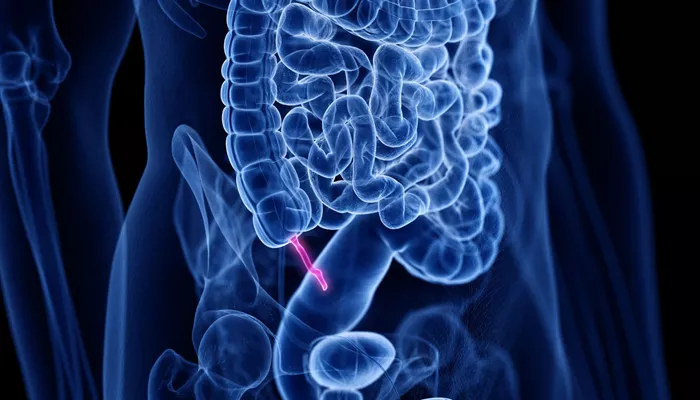The appendix is a small pouch located near the junction of the small and large intestines. While its exact function is not fully understood it can become inflamed leading to a condition called appendicitis. Diagnosing appendicitis is crucial because it often requires prompt medical attention. This article explains how doctors check your appendix the tests they use and what to expect during the process.
What Is Appendicitis
Understanding Appendicitis
Appendicitis is the inflammation of the appendix. It can cause severe pain and requires immediate treatment usually surgery to remove the appendix. If left untreated an inflamed appendix can burst leading to serious complications.
Common Symptoms
The symptoms of appendicitis include
- Abdominal pain starting near the belly button and moving to the lower right side
- Nausea and vomiting
- Loss of appetite
- Fever
- Swelling in the abdomen
How Doctors Check Your Appendix
Step 1 Medical History and Physical Exam
The first step in diagnosing appendicitis is a thorough medical history and physical exam. The doctor will
- Ask about your symptoms and their duration
- Check for tenderness in the lower right abdomen
- Perform specific tests like the rebound tenderness test (pressing on the abdomen and quickly releasing to check for pain)
Step 2 Blood Tests
Blood tests can help identify signs of infection or inflammation. These tests include
- Complete blood count (CBC) to check for high white blood cell count
- C-reactive protein (CRP) test to measure inflammation
Step 3 Urine Tests
A urine test can rule out other conditions like urinary tract infections or kidney stones that may cause similar symptoms.
Step 4 Imaging Tests
Imaging tests provide a detailed view of the appendix and surrounding areas.
Special Tests for Appendicitis
Step 5 Pelvic Exam
For women a pelvic exam may be performed to rule out gynecological conditions like ovarian cysts or pelvic inflammatory disease.
Step 6 Pregnancy Test
A pregnancy test may be done for women of childbearing age to rule out ectopic pregnancy which can cause similar symptoms.
Step 7 Laparoscopy
In some cases a laparoscopy may be performed. This is a minimally invasive procedure where a small camera is inserted into the abdomen to directly view the appendix.
What to Expect During the Diagnosis Process
Initial Evaluation
When you arrive at the hospital or clinic the medical team will
- Take your vital signs (temperature blood pressure heart rate)
- Ask about your medical history and symptoms
- Perform a physical exam
During Imaging Tests
If imaging tests are required here is what to expect
- Ultrasound You will lie on a table while a technician moves a small device over your abdomen.
- CT Scan You will lie on a table that slides into a large donut-shaped machine. You may be given a contrast dye to improve image quality.
- MRI You will lie on a table that slides into a tunnel-like machine. The process is painless but can be noisy.
After Diagnosis
Once appendicitis is diagnosed the next steps depend on the severity of the condition
- Mild Cases Antibiotics may be prescribed to reduce inflammation.
- Severe Cases Surgery (appendectomy) is usually required to remove the appendix.
Treatment Options for Appendicitis
Step 1 Antibiotics
In some mild cases antibiotics may be used to treat appendicitis. This is more common in uncomplicated cases or when surgery is not immediately possible.
Step 2 Appendectomy
The most common treatment for appendicitis is surgery to remove the appendix. There are two types of appendectomy
- Laparoscopic Appendectomy A minimally invasive procedure where small incisions are made and a camera is used to guide the surgery.
- Open Appendectomy A traditional surgery where a larger incision is made in the lower right abdomen.
Step 3 Post-Surgery Care
After surgery you will need to
- Rest and avoid strenuous activities for a few weeks
- Take prescribed medications to manage pain and prevent infection
- Follow up with your doctor to ensure proper healing
Preventing Appendicitis
Healthy Lifestyle
While appendicitis cannot always be prevented a healthy lifestyle can reduce the risk of complications. Tips include
- Eating a balanced diet rich in fiber
- Staying hydrated
- Exercising regularly
Recognizing Symptoms
Early recognition of appendicitis symptoms can lead to prompt treatment and better outcomes. Seek medical attention if you experience
- Severe abdominal pain
- Nausea and vomiting
- Fever and chills
Frequently Asked Questions (FAQs)
1. Can appendicitis go away on its own
No appendicitis requires medical treatment. Without treatment the appendix can burst leading to serious complications.
2. How long does it take to recover from appendicitis surgery
Most people recover within 2-4 weeks after surgery. Laparoscopic surgery typically has a shorter recovery time than open surgery.
3. Can I live without an appendix
Yes the appendix is not essential for survival. Most people live normal healthy lives after its removal.
4. Is appendicitis common in children
Yes appendicitis is common in children and teenagers. It is the most common reason for emergency abdominal surgery in children.
5. Can diet prevent appendicitis
While diet cannot prevent appendicitis a high-fiber diet may reduce the risk of blockages in the appendix.
Conclusion
Appendicitis is a serious condition that requires prompt medical attention. Doctors use a combination of medical history physical exams and imaging tests to diagnose it. Treatment usually involves surgery to remove the appendix but antibiotics may be used in mild cases. Recognizing the symptoms early and seeking medical care can prevent complications and ensure a quick recovery. If you experience severe abdominal pain or other symptoms of appendicitis don’t hesitate to seek medical advice. Taking proactive steps can help you stay healthy and avoid serious health issues.
Related topics:
What To Do If I Think I Have Appendicitis?
How Do They Check Your Appendix?


